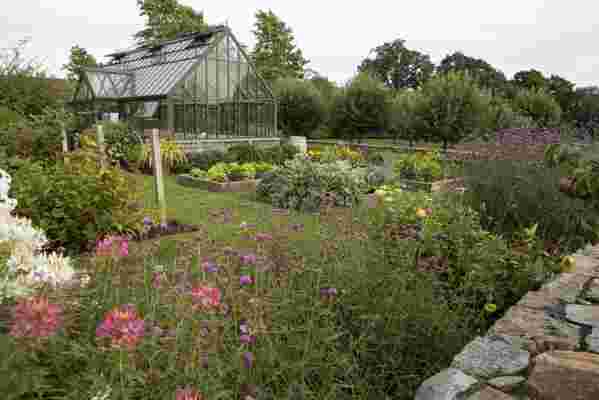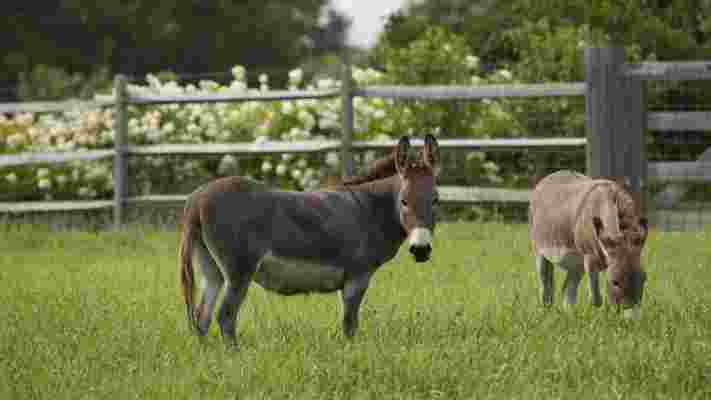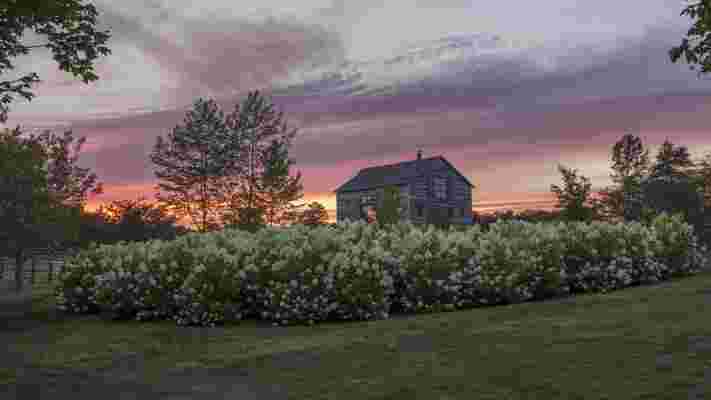This Sweeping Farm in Rhode Island Is the Ultimate Summer Getaway
Taking the long view is second nature along a pastoral stretch of the Sakonnet River in Providence, Rhode Island. When fashionable Newport merchants began building country retreats there in the 1700s, they yoked English style to Yankee pragmatism: Arcadian garden vistas framed the scenic tidal waterway, while inland crop rows and pasture kept larders well stocked. The original mansion, formal plantings, and romantic follies on one such estate vanished long ago. But the 220-acre tract still preserves a seemingly timeless panorama of vast hayfields and riverside parkland studded with giant trees, thanks to an extended family’s valiant stewardship.
On its individual 25-acre parcel of that legacy, a Philadelphia branch of the clan—a couple with two sons—enlarged a former caretaker-tenant farmer’s cottage into a summer getaway complete with tennis court, guest quarters, and kitchen garden. Both husband and wife avidly tend the vegetable beds near their greenhouse and orchard. “We grow what we eat,” he says, “and if we bring a gift to somebody, it’s usually a basket of our fresh vegetables or fruit.” He adds that flowers cut from the same plot fill vases indoors. “This isn’t a garden for show. It’s a place we live in and use.” That same sense of fitness for purpose, true to the site’s agrarian history, applies to their enjoyment of the larger property: “We just spend a lot of time walking around here. It brings us joy every day.”

The greenhouse, surrounded by a vegetable and cutting garden, from Movement and Meaning: The Landscapes of Hoerr Schaudt .
After years of wandering from one vantage point to another, however, the owners felt a lack of strong visual ties between their cluster of modest shingled structures and the terrain sweeping away from it. Their own small attempts to enhance the understated grandeur of their beautiful yet plain farmland, the husband recalls, seemed ineffectual: “We realized that it would take a pro to help us bring every part of the place alive.”
Enter landscape architect Douglas Hoerr, of Chicago-based Hoerr Schaudt Landscape Architects . His master plan for these clients aimed, he says, “to create a sense of progression, scale, and discovery.” He achieved tangible authenticity by adapting the design vocabulary of New England’s rural vernacular: fieldstone walls and paths, split-rail fences, granite gateposts, hedgerows, and gravel lanes. Besides mapping out functional areas, such as a garden-like parking court and a paddock for the wife’s pet donkeys, these patterns lend texture to wide-open ground. Swathes of perennials and shrubs soften the geometry, tempting passersby to pause for intimate closeups. And to compose picturesque prospects of distant sights (and screen neighboring houses), mature trees were transplanted and tons of earth re-contoured. Japanese gardeners might call this “borrowed landscape,” a principle Hoerr translates as: “The eye sees what the eye sees, regardless of property lines.”

A pair of donkeys in their custom paddock from Movement and Meaning: The Landscapes of Hoerr Schaudt .
On an heirloom canvas as large as this, where some ancient beech trees loom 100 feet high and wide, the landscape architect says, “you need to paint with big strokes, gestures that will read clearly for later generations.” No bold move rivals the installation of a barn by architect Eric J. Smith and designer John Peixinho, of Franklin & Company , who had tracked down and disassembled the circa 1835 building in Upstate New York. Hoerr chose the best spot for it by standing on his clients’ porch, cellphone in hand, and directing project manager Nick Fobes to park an SUV at alternative locations. Now that the barn has been furnished with elegant simplicity by Peixinho and decorator Tom Scheerer , the timber-framed interior multitasks as home office, movie screening room, and a space for entertaining. At a birthday party held there last summer, guests dined at a table set inside broad doors opening onto endless fields. The centerpiece was a “flower bed” of plants in clay pots. That way, says the host, “everyone could carry home a piece of the garden.”

The barn at sunset from Movement and Meaning: The Landscapes of Hoerr Schaudt .